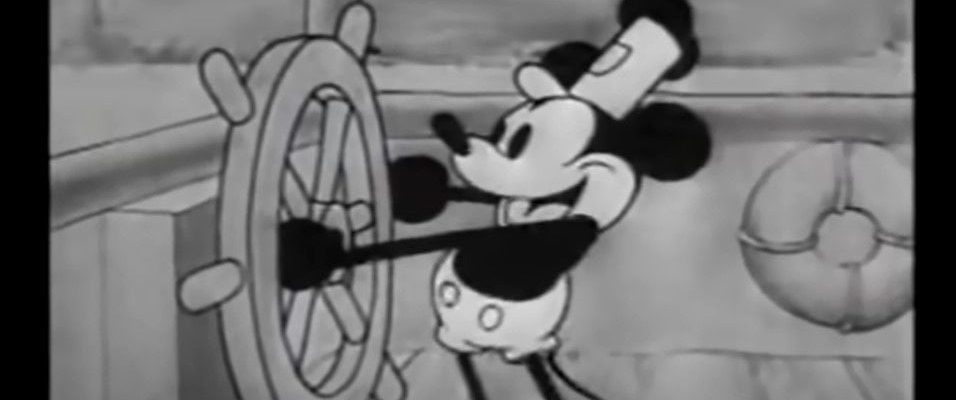On January 1, the copyright for the cartoon Willie’s Steamboat, the 1928 black-and-white short that introduced the Mickey character to the general public, will expire. In intellectual property law, the public domain designates all intellectual works and knowledge whose use is not or is no longer restricted by law.
In the Disney universe, Mickey Mouse holds a central place. He is first and foremost the ambassador character of the Walt Disney Company created in 1923. But he is also found in animated films and series, in amusement parks and in toy aisles. “Anyone will now be able to freely copy, share or adapt “Willie’s Steamboat” as well as use early versions of the characters appearing in it, including Mickey and his companion Minnie,” explains Jennifer Jenkins, public domain specialist at the University of Duke, to AFP. It is therefore not the Mickey with the white gloves and red shorts but rather the one resembling a rat with spindly legs.
Artists will thus have the right to create a “version to raise awareness of climate change” of “Willie’s Steamboat”, in which the ship runs aground on the bed of a dry river, or even a feminist version in which Minnie would hold the bar, suggests Jennifer Jenkins.
In a statement to AFP, the multinational Disney assured that it would “continue to protect its rights to more recent versions of Mickey and other works that remain protected by copyright.” Later versions of the characters, including those appearing in the cartoon Fantasia, released in 1940, remain outside the public domain and cannot be copied without Disney’s approval. Formal notices could thus be sent to creators who dare to use more recent elements of the character, such as his red shorts or his white gloves.
“Safeguards to avoid any confusion”
The Disney group assured that it was “working to put in place safeguards to avoid any confusion among consumers linked to unauthorized uses of Mickey or other iconic characters”. The company also added a scene from Willie’s Steamboat to the opening of all animated films produced by its studios. “They were very smart at Disney: they understood that the best thing to do was to transform this iconic scene into a registered trademark,” notes Justin Hughes to AFP. Thus, anyone using this image of Mickey at the helm of the ship for commercial purposes is exposed to potential legal action. Anyone planning to use the Disney mascot commercially “should proceed with caution and with a lawyer,” summarizes Justin Hugues.
In 1971, comic book writer Dan O’Neill attempted a parody of the character in his comic strip Air Pirates Funnies, in which Mickey Mouse appeared as a drug dealer and had a sexual relationship with Minnie. Disney sued him in a trial where Dan O’Neill was convicted. “It’s still a crime to me,” O’Neill, 81, said in a telephone interview from his home in California. at Variety. “If I draw a drawing of Mickey Mouse, I owe Walt Disney a $190,000 fine, another $10,000 in legal fees and a year in jail.”
